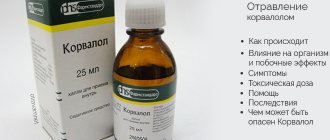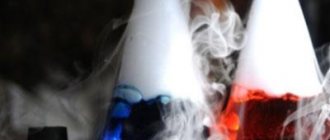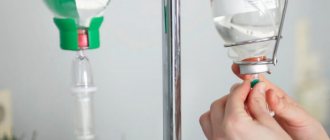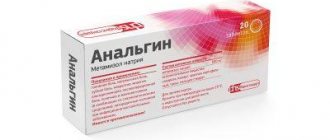A large number of specialists are faced with the production of hydrocarbons and their processing in production. Failure to comply with safety precautions leads to petroleum product poisoning of varying severity. Even more people use hydrocarbon products in their homes. If used incorrectly, their pairs or they themselves can enter the body, causing poisoning, even death.
What petroleum products most often cause poisoning?
The industry produces quite a lot of types of petroleum derivatives (diesel fuel, benzene, antifreeze, etc.). Most often, intoxication occurs at home and is caused by the following hydrocarbons:
- Kerosene poisoning . This hydrocarbon is a flammable volatile liquid with a specific odor. The poison enters the body by inhaling its vapors for a long time in a closed space. Poison can also be ingested by mistake if you mistake the toxic liquid for another drink. Most often this happens in children due to parental negligence. Poisoning with this product can also occur through the outer skin, for example, when applied to the skin as a remedy.
- Mothball poisoning . Naphthalene is an aromatic hydrocarbon that is produced for various purposes, including for household use (for example, as a means to combat moths - it can be found in tablet form in retail chains). Is naphthalene harmful to humans if used at home? Definitely yes, if its concentration exceeds the permissible dose. Poisoning can occur by inhaling vapors of the substance or getting it inside. Naphthalene poisoning causes hemolysis (destruction) of red blood cells, which entails a malfunction of not only the kidneys, but also the liver, causing its necrosis.
- Gasoline poisoning . Intoxication often occurs when inhaling vapors. Poison can get inside when pumping it from one container to another using a rubber tube while sucking gasoline into the mouth, for example, when it is necessary to drain gasoline from a car tank into a canister. Getting even a small amount into the oral cavity and then into the stomach provokes the development of signs of acute poisoning.
Occupational poisoning occurs in mining or processing industries among workers who are in direct contact with crude oil or its distillation products. These complex organic substances have a highly toxic effect on the body, causing damage to all vital systems.
A feature of the toxic effect of petroleum products and hydrocarbons is the speed of their absorption into the blood, regardless of the route of entry into the body . Inhalation of flammable materials leads to general intoxication, but the central nervous system is primarily affected.
When inhaling high concentrations of petroleum product vapors, direct contact with the mucous membrane of the respiratory tract leads to destructive processes. This condition is fraught with toxic bronchitis.
With local exposure to the skin, various dermatitis develops, the course of which is similar to the manifestations of eczema. The destruction of the cellular elements of the skin is accompanied by damage to the small circulatory network of the dermis, through which the poison is absorbed into the blood. Toxic skin lesions are treated over a long period of time; healing of the affected areas is difficult. If contact with the provoking factor continues for a long time, the possible outcome of this process will be the development of chronic poisoning.
During oil production in the north, pumps and mud systems are located in covered blocks. The content of hydrocarbons and other harmful gases in such conditions sometimes exceeds the maximum permissible concentration by up to 20 times.
When petroleum distillation products are ingested, even in small quantities, symptoms of acute intoxication occur. A burn occurs in the mucous membrane of the digestive tract. When ingested, poisoning with hydrocarbon products is the most severe, leaving behind significant changes in the gastrointestinal tract. Ingestion or aspiration can lead to "gasoline" pneumonia , characterized by the following symptoms:
- chest pain (usually on the right side);
- migraine;
- chills, accompanied by a sharp increase in temperature (up to 39-40 ° C);
- after 1-2 days, rust-colored sputum begins to separate.
With proper treatment, a favorable course of the disease is observed, recovery occurs in approximately 1-2 weeks.
SEARCH
Toxic effect of kerosene [p.637]
However, the toxic effect of kerosene-benzene on water bodies, as well as on organisms conducting their biochemical purification, has not yet been studied, and the maximum permissible concentrations for [p.119]
Kerosene. The general effect of kerosene is similar to gasoline, but the irritating effect of its vapors on mucous membranes is more pronounced. In terms of toxic concentrations, kerosene vapors are close to gasoline vapors, but they also affect the skin, causing dermatitis and eczema, like fuel oils, gas oils, and lubricants. [p.99]
The most well-known hydrocarbons are gasoline, kerosene, benzene, etc. These solvents are not used in the production of plastics due to their toxic effects, so we will not dwell on their properties. [p.12]
Various volatile substances (kerosene, turpentine, alcohol) sometimes added to emulsions can have a toxic effect. [p.70]
To detect the synergistic activity of a mixture, the concentration of the synergist must be so low that, if applied at this concentration, the synergist itself would have little or no toxic effect.
For most experiments conducted on houseflies, a 1% concentration of synergists was chosen, since at this concentration the synergists are no more toxic than kerosene, and also because at this concentration pyrethrin synergists are available in many commercial formulations.
In addition, when comparing insecticides with very different toxicities, it is more convenient to take a constant concentration of the synergist than to select and maintain a certain ratio of insecticide and synergist each time.
Other concentrations were also taken for experiments if they resulted in no more death of the experimental insect species than in the control. [p.26]
The general effect of kerosene on the human body is similar to the effect of gasoline; the toxic concentrations of kerosene and gasoline vapors are close in value. The irritating effect of kerosene vapor on mucous membranes is even more pronounced. Kerosene acts on the skin, causing dermatitis and eczema. [p.45]
Most toxic substances cause combined damage to the body. Thus, gasoline and kerosene cause chemical burns when they come into contact with the skin, and when penetrating into the body through the skin or respiratory tract, they affect the nervous system. [p.260]
People have known for about a century that illuminating gas is toxic to plants. In the middle of the century it was shown that ethylene is the toxic component of the gas. Later, quite by accident, it was discovered that ethylene has the ability to accelerate the development of color in lemons.
At that time, heat and moisture were used to speed up the ripening of lemons, and the heat was created by kerosene stoves. One entrepreneur replaced old-fashioned ovens with heat exchangers and discovered to his great chagrin that the lemons remained green.
Through special studies, Sivere and True [79] established that when processing fruits, the products of incomplete combustion of kerosene are necessary. The active principle in this case, as shown by Denny [38], is ethylene.
Subsequently, it was discovered that the ripening of the fruits of many plants during storage (bananas, pears, apples, tomatoes, etc.) is accelerated by adding small amounts of ethylene to the storage atmosphere. [p.389]
V.I. Vashkova (1947), even 1% solutions of hexachlorane in kerosene have a toxic effect on rabbits. Apparently, in this case, the absorption of hexachlorane through the skin is enhanced by the solvent used - kerosene. This is also evidenced by other data from V.I. Vashkov (1948). Thus, 1, 3, 5 and 10% solutions of hexachlorane in dichloroethane and turpentine - easily volatile liquids (we used dressings soaked in these solutions and pre-dried for 10-15 hours), as well as 5% and 10% hexachlorane dusts did not have any visible effect effects on experimental animals. [p.77]
The toxic effect is very similar to the effect of saturated hydrocarbons of the methane series. The lower members of the series, cyclopropane, have a sweetish odor (reminiscent of a mixture of chloroform and ethylene); the odor of methylcyclonentane is reminiscent of the odor of benzene. Higher homologues—cyclohexane, ethylcyclohexane—have a rather pleasant ethereal odor.
The smell of methylcyclohexane, dimethylcyclohexane is rather similar to the smell of kerosene or naphtha. The strength of the narcotic effect of the vapors is higher than that of the corresponding methane hydrocarbons, and cyclhexane derivatives are stronger than cyclopentane derivatives with the same number of carbon atoms.
Like some paraffin hydrocarbons, many cycloparaffins cause sudden tetanic convulsions and death from respiratory arrest in animals (cyclohexane, methylcyclohexane, dimethylcyclohexane, methylcyclopentane, ethylcyclopentane).
Good deep anesthesia under the influence of cyclopropane is not accompanied by any noticeable changes in blood pressure and respiration, but at concentrations [p.42]
See pages where the term Toxic effect of kerosene : [p.202] See chapters in:
Oil and petroleum products -> Toxic effects of kerosene
The effect is toxic
Kerosene
© 2020 chem21.info Advertising on the site
Source: https://www.chem21.info/info/1577640/
Symptoms, first aid, treatment
Depending on the type of substance and its quantity entering the body in one way or another, the clinical manifestations of poisoning will be different. But damage to the central nervous system is present in all cases.
Kerosene poisoning
Poisoning with this hydrocarbon can be acute or chronic, depending on the dose of the toxic drug and the method of its penetration into the body. If intoxication occurs gradually in a small concentration, by inhaling vapors, the clinical manifestations will be as follows:
- a feeling of intoxication appears, accompanied by excitement, loss of coordination, and sweeping movements;
- noise in ears;
- irritation of the mucous membrane of the eyes with the development of conjunctivitis;
- migraine, dizziness;
- dry cough due to irritation of the upper respiratory tract;
- periodic heart pain accompanied by tachycardia;
- sometimes loss of smell and hearing loss;
- weakness and shortness of breath, combined with drowsiness.
Such symptoms are observed in mild cases of poisoning. When inhaling high concentrations of kerosene vapor, the manifestations of intoxication are aggravated by the central nervous system. The development of hallucinations, loss of consciousness, and the appearance of convulsions is possible.
First aid for petroleum product vapor poisoning involves calling an ambulance doctor. Before his arrival, the patient must take the following measures:
- put him to bed and provide him with a flow of fresh air;
- unbutton clothes that are restricting the body;
- drop and give Corvalol or valerian tincture to drink;
- Soak a cotton pad with ammonia and let it smell.
An emergency doctor on site provides emergency care by intramuscular or intravenous administration of medications. If the victim's condition does not improve, hospitalization is carried out.
Contact with kerosene on the external surfaces of the body causes hyperemia (redness) of the skin and itching of the affected area. With prolonged contact, it is possible to develop long-term non-healing dermatitis, eczematous skin lesions, and the appearance of furunculosis, accompanied by swelling of the skin. Prolonged contact of kerosene with the skin and its absorption into the body leads to chronic intoxication and the appearance of symptoms similar to poisoning by its vapors. If kerosene gets on your skin, wash it off as soon as possible with running water and soap.
When a hydrocarbon is ingested, a picture of acute poisoning is observed, accompanied by the following symptoms:
- the appearance of nausea and vomiting with the smell of kerosene in the vomit;
- difficulty breathing, hoarseness of voice;
- sharp barking cough;
- bloating;
- loss of consciousness and the appearance of convulsions are possible.
If you swallow kerosene, you must call an ambulance doctor . Next, follow the treatment plan for food poisoning - remove the remaining hydrocarbons from the body as quickly as possible, using gastric lavage and sorbents.
Mothball poisoning
Inhalation of naphthalene vapors provokes headache, cough, lacrimation, decreased visual acuity, and the appearance of mental disorders.
Medical assistance is provided urgently. If naphthalene gets into the stomach, it is washed only through a probe, after introducing 30-40 grams of vegetable oil into the organ as an enveloping agent to prevent the absorption of the toxic substance. To prevent kidney damage, specific and symptomatic therapy is carried out.
Gasoline poisoning
The clinical picture of the action of a toxic substance when inhaled is identical to the manifestation of kerosene poisoning. In this case, the central nervous system is primarily affected. With a high concentration of gasoline, inhalation of its vapors, even for a short time, can lead to the development of collapse with a drop in pressure and the development of heart failure. With such symptoms, if the patient does not receive emergency care, death may occur.
Prolonged stay in premises contaminated with gasoline vapors is fraught with the development of chronic poisoning with complications from the central nervous system and internal organs, such as:
- toxic hepatitis;
- hemorrhagic diathesis;
- asthenic syndrome.
Treatment measures for gasoline poisoning consist of emergency care and subsequent dispensary observation in a clinic at the place of residence.
Fight against sinusitis
Healers recommend using kerosene for sinusitis, sinusitis and even the runny nose.
Traditional treatment is as follows:
- Lubrication. If you have a runny nose, lubricating the soles of your feet with kerosene will help eliminate the illness.
- Wraps. For sinusitis, such an event will be beneficial. It is necessary to wipe the body with kerosene. Wrap paper on top (preferably in 2 layers). Wear warm clothes. It is recommended to keep this wrap on the body for 2-3 days.
- Tampons. Take cotton swabs. Soak them in kerosene. Insert one stick into each nostril for 2-3 minutes. The procedure should be performed before bedtime. Repeat the event every other day. The duration of such treatment is 4-5 days.
Traditional medicine and kerosene treatment
At the beginning of the last century, there were rumors that kerosene could not only fuel lamps, but also provide treatment. Traditional medicine offers recipes for healing from various ailments, and its use is intended both externally and internally. The diseases treated by traditional medicine have a wide range. Kerosene is used as a lotion for joint diseases, as well as in the treatment of the upper respiratory tract and gastrointestinal diseases. For oral administration, only purified, not technical kerosene is suitable.
Before carrying out such therapy, it is necessary to undergo an examination and be sure to consult a doctor. For this treatment, absolute contraindications are:
- liver diseases;
- chronic renal failure;
- allergic reactions of the body;
- frequent bleeding.
The name of nurse Paula Kerner, who healed herself with kerosene from terminal cancer of the intestines, went down in history. Kerner’s technique is that every day for a certain period of time (individual for each patient), the patient takes 15 drops of purified kerosene on a piece of sugar - this “stimulates the lymphatic vessels and improves the health of the blood.” The recipe allegedly brought out of bed not only the author of the method, but also several dozen other cancer patients. However, deaths due to chronic intoxication have been recorded.
It is necessary to understand that kerosene, when consumed internally for a long time, can lead to:
- liver cirrhosis;
- kidney pathologies (including renal failure), which are completely unadapted to removing this kind of toxin;
- a burn of the gastrointestinal tract with kerosene leads to blockage of the outlet channel of the pancreas, and the enzymes it secretes corrode it itself - reactive pancreatitis occurs, which subsequently leads to necrosis of pancreatic tissue.
In the USSR, the name of Mikhail Petrovich Todik is known, who invented a green walnut tincture on kerosene, which saved him from chronic radiculitis. The phytoncidal effect of nuts was multiplied by the penetrating properties of the hydrocarbon. Today the tincture is sold under the brand name “Todikamp”.
Despite the fact that traditional medicine uses kerosene to treat various pathologies, it remains a toxic substance, so the effect of hydrocarbons on the human body can be unpredictable even in low concentrations.
The drug "Todikamp"
It is impossible to say who came up with the idea of combining kerosene and walnuts. But the fame of this remedy was given by Mikhail Todik, a Moldavian scientist. The tincture was called “Todikamp”. They even began to officially release it in Volgograd.
The tool has been slightly improved. May pollen and honey were added to the main components. The new tincture “Todikamp-ideal” has improved properties.
During the research, it was revealed that the product has the following effects:
- antioxidant;
- antiparasitic;
- anti-inflammatory;
- wound healing;
- painkillers;
- bactericidal.
In addition, the product increases immunity and improves hematopoietic processes.
You can make a tincture using kerosene at home. It is used for a wide variety of ailments. And this is a fairly effective treatment.
Kerosene is used purified. To eliminate the unpleasant odor, you can additionally filter the liquid through activated carbon or river sand. Walnuts should be taken young, with milk pulp still inside.
Preparation of tincture:
- Take 10 walnuts. Pass them through a meat grinder.
- Fill the component with kerosene - 3 tbsp.
- Leave the product in a dark place for 10-14 days.
- Then transfer to the light and leave the “medicine” for 26-30 days. In general, the product should be infused for 40 days.
- Filter the preparation through gauze.
If you want to make a product reminiscent of Todikamp-ideal, then you should add to the kerosene:
- May pollen – 0.1-0.5 parts;
- high-quality propolis – 0.5-1 part.
This tincture keeps well. Its beneficial properties are not lost. But it is best to use the product within 3 years.
Prevention of poisoning
To avoid poisoning with petroleum products, the following precautions must be observed:
- Strictly observe safety precautions in production;
- when using toxic substances in everyday life, they must be kept out of the reach of children;
- When working with hydrocarbons, do not eat or smoke;
- use safety glasses;
- After finishing working with aggressive substances, you must change your work clothes and wash your hands with soap.
Following these simple rules of prevention will allow you to avoid poisoning the body and maintain health when in contact with aggressive substances.
Grandma's remedy
We will talk about turpentine - a favorite remedy for the elderly population for the treatment of various pains. The back hurts, the joints are rubbed with turpentine, warmed up, and the pain seems to subside. And the bottle of turpentine, due to its age, may not be put away. Therefore, the main category at risk of getting turpentine poisoning is small, curious children who may accidentally taste their grandmother’s remedy.
Symptoms of poisoning in adults occur when working with turpentine, and are usually accidental. However, treatment should begin as quickly as possible; turpentine is highly toxic and can cause severe renal pathologies. Distinctive symptoms:
- tachycardia;
- dizziness;
- sharp pain in the stomach;
- vomit;
- increased urination;
- strong smell of turpentine from the patient, as well as from the vomit;
- The patient's urine turns pink or red from blood, and smells... like violets!
How to treat bronchitis
This disease is also perfectly treated with kerosene.
The following methods are recommended:
- Take half a glass of port. Dilute honey in it (1 tsp). Chop the peeled head of garlic. Prepare kerosene (40-50 ml). At night, rub your feet with garlic and insulate them with woolen socks. Rub the chest area with kerosene. Put on some warm underwear. Drink the prepared port with honey. This event should be repeated daily until complete healing.
- To combat the disease, it is necessary to take a healing drug orally. It should be understood that such treatment is performed with purified kerosene. The course of therapy is 40 days. For 20 days, you need to drink 100 g of milk every night, adding kerosene to it. Start with 1 drop. The dose should be increased every day. Thus, the next day 2 drops of kerosene are added to 100 g of milk. After 20 days, the dosage begins to be reduced. On the 40th day you should drink milk with 1 drop of kerosene.
It turns out that kerosene actually suppresses Candida fungal infections. The experiments were carried out in vitro. But the human body is not a glass test tube. This is how the doctor Chandaka from India, who had to save patients, describes the effect of kerosene. Doctor o (Portal "Antikor") notes that a dead man was found in the capital, who did not go to the doctors and was self-medicating with kerosene. An autopsy revealed severe pneumonia, signs of cardiovascular disease, and a chronic stomach ulcer.
Those who, in their financial interests, advertise kerosene treatment will object: “refined kerosene”, aviation fuel, is used. Regardless of the degree of purification, petroleum products have toxic properties.










